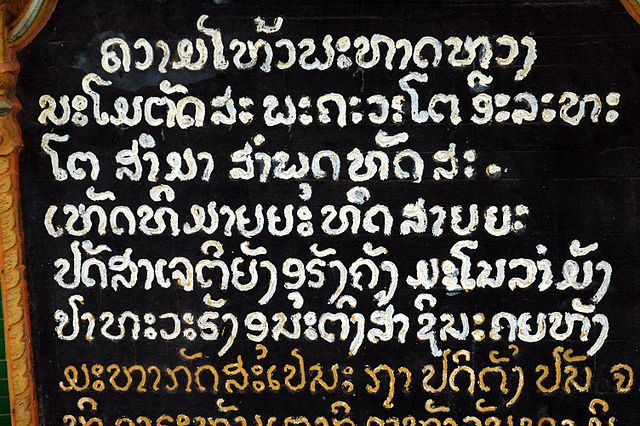The Tai Dam are an ethnic minority predominantly from China, northwest Vietnam, Laos, Thailand. They are part of the Tai peoples and ethnically similar to the Thai from Thailand, the Lao from Laos and the Shan from Shan State, Myanmar. Tai Dam means "Black Tai". This name comes from the black clothing worn by the group, especially females. In Vietnam they are called Thái Đen and are included in the group of the Thái people, together with the Thái Đỏ, Thái Trắng, Phu Thai, Tày Thanh and Thái Hàng Tổng. The group of the Thái people is the third largest of the 54 ethnic groups recognized by the Vietnamese government. The Tai Dam's language is similar to Lao, but Tai Dam use their own unique writing system and traditionally rejected Buddhism. According to the Tai Dam's creation story, the Lo Cam family is to be the ruling class and the Luong the priests.
Tai Dam people
A Tai Dam lady in Laomeng village, Jinping Miao, Yao, and Dai Autonomous County, Yunnan Province, China.
Traditional dwelling of the Tai Dam in the Mường Thanh Valley, northern Vietnam. The Vietnamese name Mường Thanh is from the local Tai form of Mueang Thaen, the 'City of the Gods' and the birthplace of Khun Burom in the Tai legends of Southeast Asia.
Lao, sometimes referred to as Laotian, is the official language of Laos and a significant language in the Isan region of northeastern Thailand, where it is usually referred to as the Isan language. Spoken by over 3 million people in Laos and 3.2 million in all countries, it serves as a vital link in the cultural and social fabric of these areas. It is written in the Lao script, an abugida that evolved from ancient Tai scripts.
Wat Phra That Phanom in Nakhon Phanom. Built in the 16th century over earlier Khmer ruins when Isan was part of Lan Xang, the temple is an important place of pilgrimage, attracting Lao from Laos as well as Isan to its temple festivals.
Temple mural of Wat Photaram in Maha Sarakham Province. Dating to the reign of Siamese Ruler Rama III (1788–1851), the writing is in the Tai Noi script, an old form of the Lao alphabet.
A bilingual Lao-French street sign in Vientiane. Although the influence of French on the Lao language has waned considerably, hundreds of words of French origin are used in Laos.
Lao script on a sign at Wat That Luang, Vientiane.







